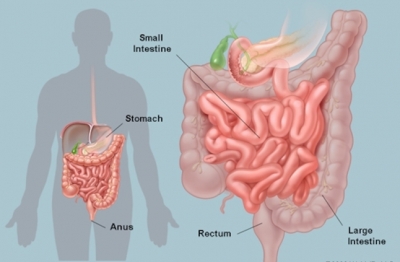
Intestines are organs, or body parts, that are shaped like long tubes. They help break down food so that the body can use it for energy. This is part of the process called digestion. The intestines also remove wastes from the body. Mammals, birds, reptiles, amphibians, and fish have intestines.
A human’s intestines fill much of the middle part of the body below the rib cage. The intestines are divided into two main sections, the small intestine and the large intestine. The small intestine is 22 to 25 feet (6.7 to 7.6 meters) long and coils like a maze. The large intestine is 5 to 6 feet (1.5 to 2 meters) long. The intestines have a special kind of muscle that squeezes and relaxes in a wavelike motion. This motion pushes food and waste through the intestines.
The bulk of food digestion takes place in your small and large intestines. Two tubes that absorb all the vitamins, minerals, and other nutrients from everything you eat.
Picture Credit : Google




